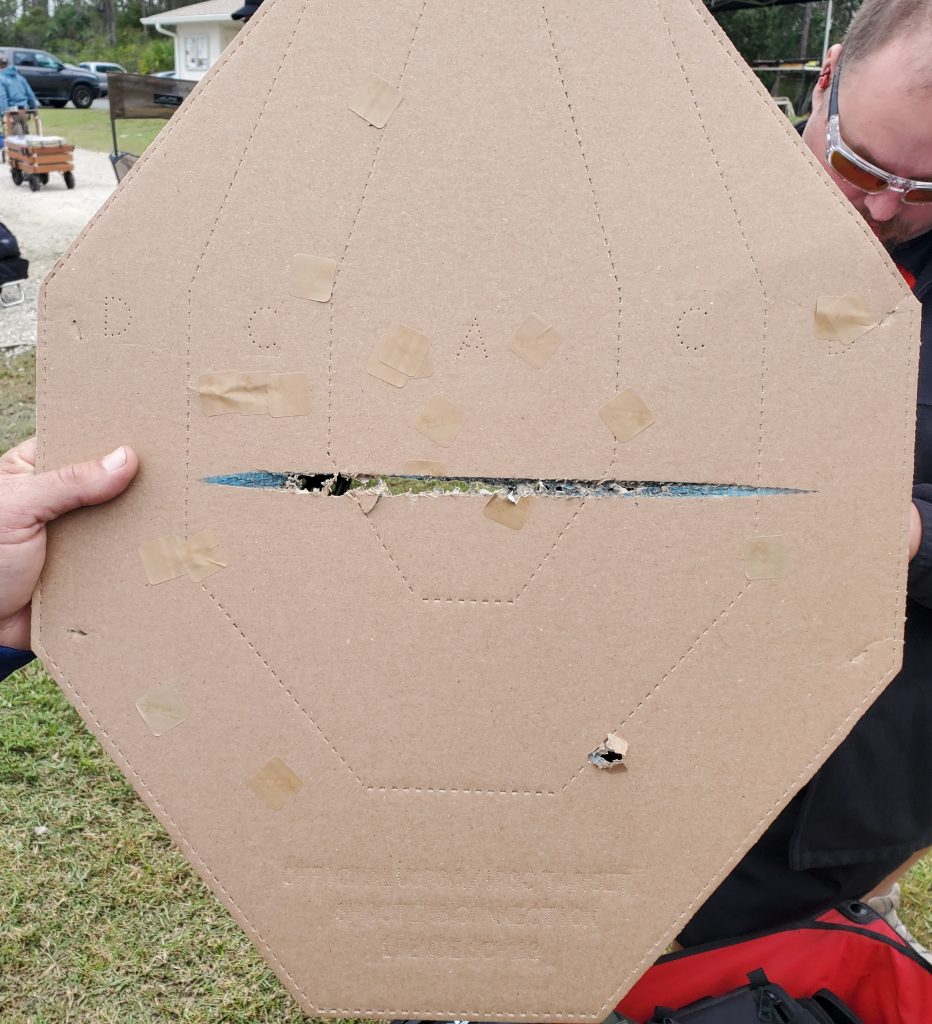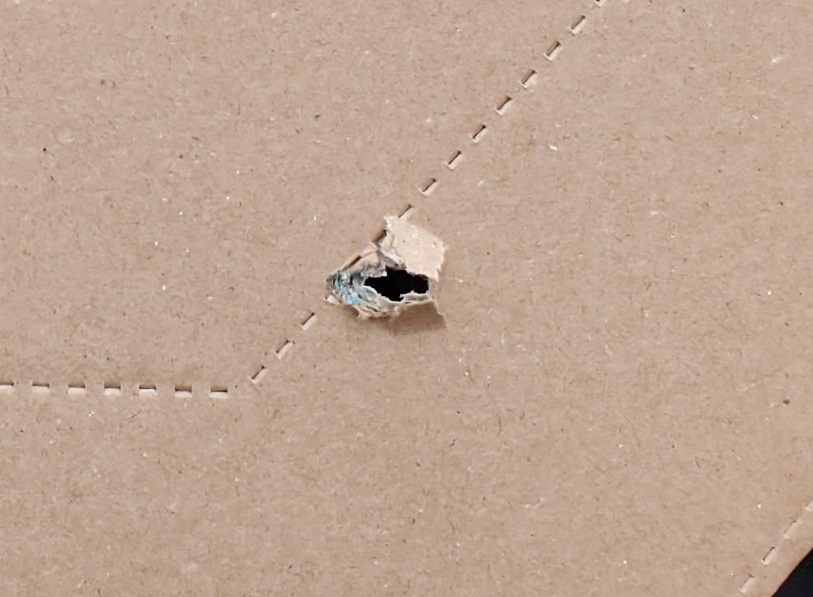Have you ever had to score a target from a drop turner where the bullet sliced across the target face? Did you make the right call? The April Question of the Month asked everyone how they would score the below target.

I do have to say that this question had the most responses, as well as the most spirited discussions on social media than any of the other questions to date. So, what is the right call? Does that top hit count for score? And if so, which scoring zone? And what about that lower hit? There was a lot of discussion about that one too. Which side of the target did it come through first? Here are the results from the poll:
Looking at the top two results, some of you think both hits score while others think both hits are misses. And the third and fourth place answers indicate that some of you think one counts while the other doesn’t. Let’s look at each hit in more detail.
Let’s start with the top hit, which was the main focus of the question. For any turning target, make sure as the RO you understand how the target is moving. Is it rotating from the left? From the right? Which direction are the bullets coming from? This information will be useful when you need to score hits that are odd. This bullet skimmed across the face of the target. This is usually seen on rotating targets, such as on drop (gravity) turners because normal static targets are setup to avoid allowing side shots like this. The competitor fired the shot before the face of the target was completely rotated towards him/her. And from the enlarged image below, we see that the target was completely perforated in the center of the A-zone (we can see grass through the target), and the nice blue streaks indicate that the competitor was using blue-coated bullets.

Based on the discussion on Facebook, everyone was using the proper rule to make their call, but the interpretation of that rule was in dispute. Rule 9.5.9 says that, “Hits upon scoring or no-shoot cardboard targets, must completely pass through the target to be considered a valid hit and count for score or penalty.” Many folks reasoned that the bullet didn’t enter the face of the target and exit the rear of the target, hence it didn’t pass through the target and doesn’t count. Okay. Does 9.5.9 mention that the bullet has to go through the target? The rule says the hit has to go through the target. In this case, when the bullet hit the target it skimmed the surface, and made a hole completely through the target. If we can see daylight through the target, it counts as a hit. And no, if a bullet is lodged in the target, because someone is trying to save money by using only a grain of powder, we don’t see daylight so it doesn’t score.
Another point that was discussed was is that skimmer a A-zone or C-zone hit? Yes, rule 9.5.2 talks about bullet diameters, and yes that is not a round hole like we see on our scoring overlays, but the whole streak is part of the very oblong hit on the target as the result of a partial bullet diameter hit. We score it just like any other partial hit and the hit earns the higher scoring zone value. In this case, that skimmer crossed the C-zone twice, but it also crossed the A-zone which is the higher scoring value and the proper score for that hit. And at the match, this hit was scored as an Alpha.
Some folks mentioned that the top hit didn’t count because of 9.5.5, which states that enlarged holes that exceed the bullet’s diameter don’t count for score. That top hole is long and oblong, but does not exceed the bullet’s diameter. If you took your overlay and checked the width of that slice, it will be consistent with the size of the bullet all the way across. The slice was clearly made by a bullet and not a rock or shrapnel from a piece of steel, which is what 9.5.5 deals with. And no, that is not a radial tear either (9.5.4, see definition in App. A3).

What about that lower hit? When the RMIs saw this picture, there was some disagreement about whether the hit entered through the front of the target or the back (again, why it’s important to understand how the target moves). The cardboard poking out the front of the target at minimum should make you take a closer look to determine if the hit came from the back of the target. At the match, it was determined that this hit entered on the back side of the target and exited out the front, and as a result was scored as a no penalty miss since the drop turner was a disappearing target (see 9.5.8). It is very important, especially on drop turner targets, that you investigate hits that look odd to determine if the hit came through the back or front of the target. Any hit that comes through from the back of the target (or no shoot) does not count.
So, the correct answer for the April Question of the Month was Alpha, Mike (we didn’t state that the drop turner was disappearing in the question). Make sure you visit the blog homepage and vote in the current Question of the Month.